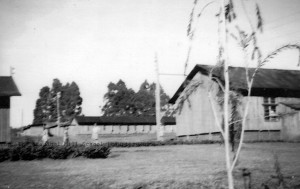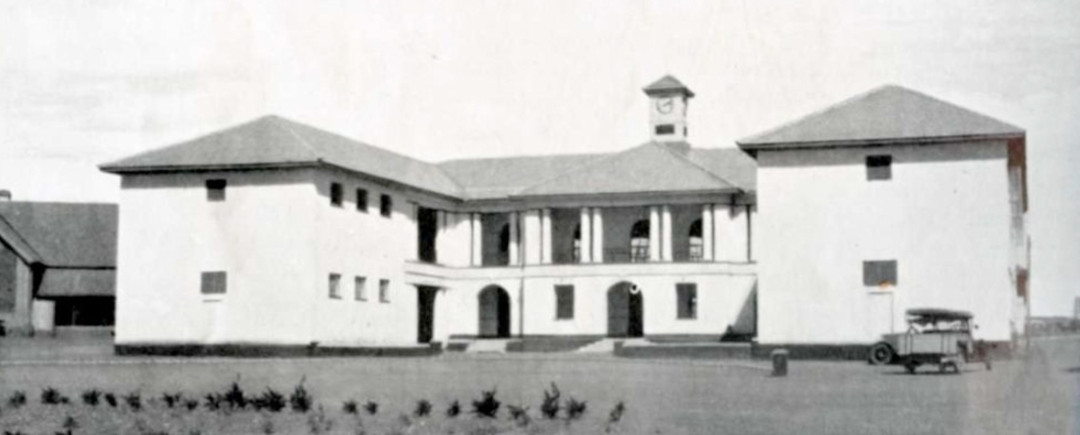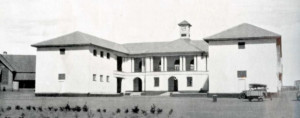Merry Christmas, Everyone!
Briton versus Boer: Educational Tensions in the Trans-Nzoia
After the Second World War, the British Government encouraged white settlers to go to the Trans-Nzoia area and Uganda. Of course this increased the number of children to be educated. As Eldoret was the largest town, it was sensible to place the schools there, especially as it was easily reached from Uganda by rail. The Central School was built there, but as the number of Afrikaner children attending rose, so the few British pupils fell. By 1944 96% of the 200 pupils were Afrikaner. By 1948 no teacher at the school spoke Afrikaans, so there was no instruction in Afrikaans. The Headmaster, Hunter, refused to have books in Afrikaans in the school library.

The original Hill School. Photo courtesy John Focks.
In 1944 another school had been opened in Eldoret – the Hill School, which took over the buildings of a former RAF base. Why did this happen? Although it was not explicitly stated, the supposition is that that the Hill School was developed in order to cater to the racial prejudices of Briton and Afrikaner. Ugandan administrators had a powerful voice and they wanted their children to go to an English-dominated school. There was tension between Briton and Boer on the plateau and the local residents also wanted an English school. Yet, within a few years, the Kenya Government wanted the two schools to amalgamate, to remove the racial distinctions. The DC lugubriously noted: ‘It will have no appreciable result, for Afrikaans speaking parents will still choose the Highlands School [as the Central School had been renamed] and English speaking ones the Hill School.’ (KNA, DC/UG/2/4, Publications 1946-57). When Hunter retired in 1953, most of the children at the Highlands school were still Afrikaans-speakers. My father was a teacher there and he had a difficult time trying to get the children to learn and speak in English. In 1951 only 39 of the 214 children at the Highlands School were English-speaking.
Kitale Central School, later renamed Highlands School.
Ugandan parents, reluctant to have their offspring live with Afrikaners, objected strongly to amalgamation. This was the racial breakdown in 1953:
From Kenya, Hill School had one Italian, one Greek, 73 English and 36 Afrikaans-speaking pupils. From Uganda Hill School had two Italians and 107 English students for a total of 220 students.
From Kenya, Highlands School had 52 had 52 English-speaking students and 204 Afrikaans-speaking. In additon Highlands school had three English students from Uganda.
Yet the amalgamation was pushed ahead and in January 1956 the Highlands and Hill schools were converted. The Highlands became an all-girls school and the Hill was expanded to take the student bodies of both schools, 500 in all, of whom 350 were boarders. The misgivings about the racial mix proved to be groundless. In fact the racial tensions in the next few years were minimal and Afrikaners and British were assimilated in the same educational system.



Recent Comments